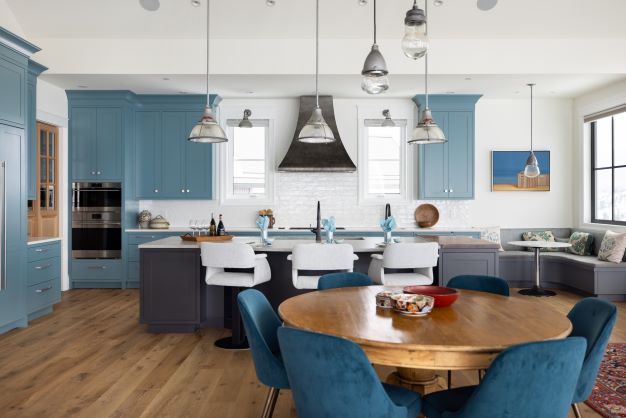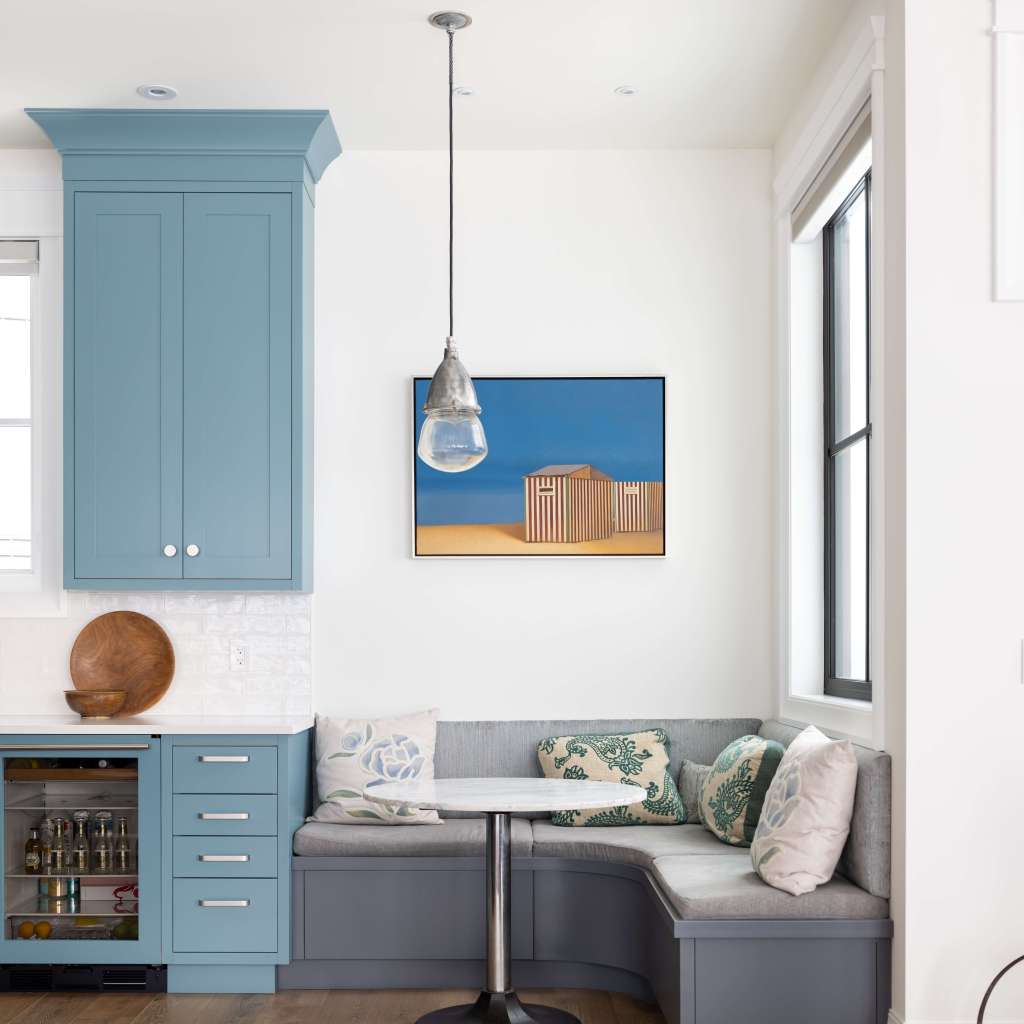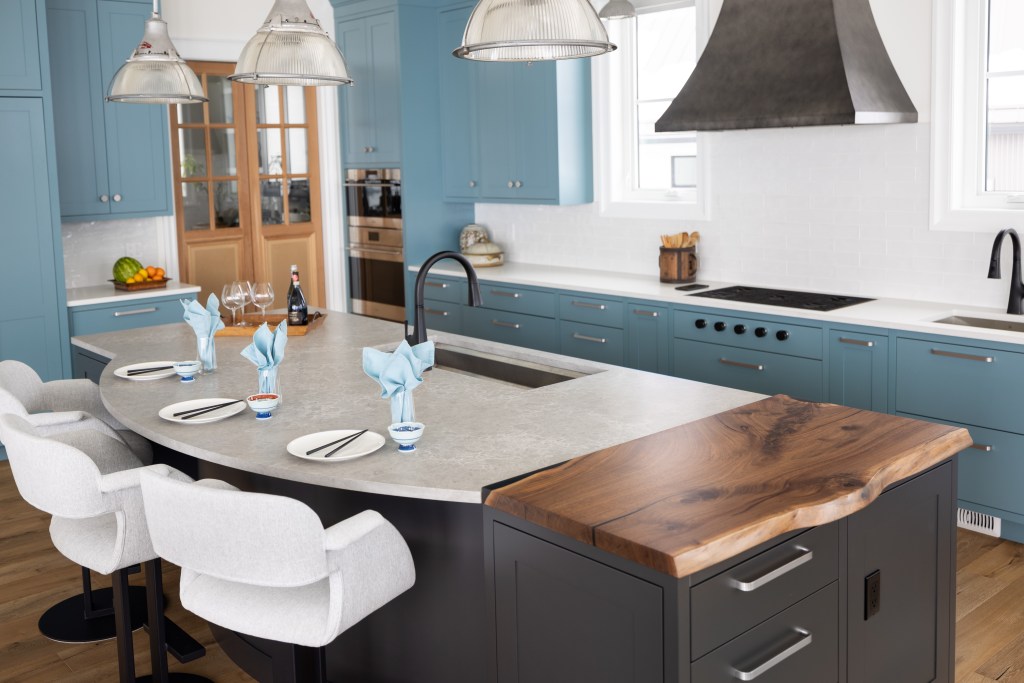Color is a powerful design element in any form of design, and kitchen design is no exception.
The choice of colors you choose for your kitchen designs can greatly influence its ambiance, style, and functionality.
Understanding the role of color in kitchen design is essential for creating a space that reflects your client’s personal taste and fulfills their practical needs.
In this VESTA Blog, we will explore the significance of color in kitchen design.
The Psychology of Color in Kitchen Design
Before diving into specific color choices, it’s essential to understand the psychology of color and its impact on human emotions and behavior.
Different colors evoke different feelings and moods, making it crucial to choose the right color scheme for your client’s kitchen.
Here are some common kitchen colors and their psychological associations:
White





White is associated with cleanliness, purity, and freshness.
It creates a sense of spaciousness and reflects light well, making it an excellent choice for smaller kitchens or spaces with limited natural light.
Gray




Gray is often seen as a neutral and calming color.
Light gray can create a sense of serenity, while dark gray adds sophistication and depth to your kitchen designs.
Blue




Blue is known for its calming and soothing qualities.
Light blues can create a peaceful atmosphere, while deeper blues can evoke a sense of stability and trust.
Green





Green is often linked to nature and growth.
It can create a refreshing and rejuvenating atmosphere, making it an excellent choice for kitchens where you want to promote a connection with the outdoors.
Red




Red is associated with energy and passion.
It can stimulate appetite and conversation, making it a popular choice for dining areas within the kitchen.
Yellow




Yellow is a cheerful and uplifting color.
It can create a warm and inviting atmosphere, and can create a happy and energetic cooking space.
Brown





Brown evokes a sense of warmth, stability, and comfort.
It can create a cozy and inviting atmosphere, particularly when used for cabinetry or flooring.
Considerations in Choosing Kitchen Colors
When selecting colors for kitchens, there are additional factors to consider to ensure a harmonious and functional design:
Kitchen Size
The size of a kitchen can greatly influence color choices.
Light colors, such as white or pale gray, can make a small kitchen appear larger, while dark colors can add coziness to a spacious kitchen.
Natural Light
Consider the amount of natural light the kitchen receives.
If it’s well-lit, you have more flexibility in choosing both light and dark colors.
However, in darker kitchens, it’s usually advisable to use lighter colors to brighten the space.
Personal Style
Your client’s personal style and preferences can play a significant role in color selection.
Ask about the colors that make them feel comfortable and at ease, and use that as inspiration.
Trends in Kitchen Colors
Kitchen design trends in color evolve over time, reflecting changes in design preferences, technology, and lifestyle.
Staying informed about current trends can be helpful when designing kitchens.
Here are some recent trends in kitchen colors:

Two-Tone Kitchens
Two-tone kitchen designs involve using different colors for upper and lower cabinetry.
It adds contrast and visual interest to the space.

Dark & Moody Colors
Deep, dark colors like navy blue, forest green, and charcoal gray are gaining popularity for kitchen cabinetry.
They create a cozy and luxurious atmosphere.

Neutral & Earthy Tones
Neutral colors such as warm beige, creamy whites, and soft grays remain timeless choices for kitchen design.
Earthy tones, including warm terracotta and olive green, are also on the rise.

Colorful Appliances
Colored appliances are becoming a stylish and bold choice in kitchen design.
You can find soft pastel tones through to strong jewel tones for kitchen appliances.

Bold Backsplashes
Statement backsplashes in bold and vibrant colors or patterns can add drama and personality to the kitchen.
This can be a great place to introduce your client’s favorite color.
Maintenance & Longevity Consideration
While color is a vital aspect of kitchen design, it’s essential to consider the practicality and maintenance of chosen colors.
As the kitchen designer, it is important to discuss the maintenance of certain colors with your client.
Here are some factors to keep in mind:

Stain Resistance
Lighter colors may show stains and spills more readily, so consider stain-resistant finishes for surfaces that are prone to spills, such as countertops and backsplashes.
If your client wants to marble throughout their kitchen, discuss its porosity and tendency to stain with them, to avoid disappointment!

Cleaning
Darker colors can hide stains but may show dust and smudges more prominently.
Glossy finished can also require more precise cleaning.
It is important for you client to consider how much maintenance they’re willing to undertake.

Resale Value
If your client plans to sell their home in the future, you may want to recommend a neutral or timeless color choices for broader appeal to potential buyers.
White is usually a good bet here.

Personal Preferences
Ultimately, color choices should reflect your client’s personal preferences and lifestyle.
Help them select colors that make them feel comfortable and at ease in their kitchen.
The “color of the moment” is not for everyone and a color that resonates with them can provide more enjoyment in the long run.
Color plays a crucial role in kitchen design, influencing the atmosphere, style, and functionality of the space.
By understanding the psychology of color, considering practical factors like kitchen size and natural light, and taking into account client’s personal preferences, you can create a kitchen design that not only looks beautiful but also enhances your client’s daily life.
Do you have a favorite color scheme you recommend to your clients? Let me know about it in the comments below.

Jan Rutgers has been designing kitchens and products for over 25 years and is a recipient of Kitchen & Bath Design News’ Top Innovators in 2020 for the Kitchen & Bath Industry. She has designed more than 1000 kitchens learning valuable skills with each one! Her experience in Kitchen Design, Millwork Manufacturing and Product Development has led her to create VESTABUL SCHOOL OF DESIGN where she educates and mentors people passionate about the Kitchen Design Industry.





